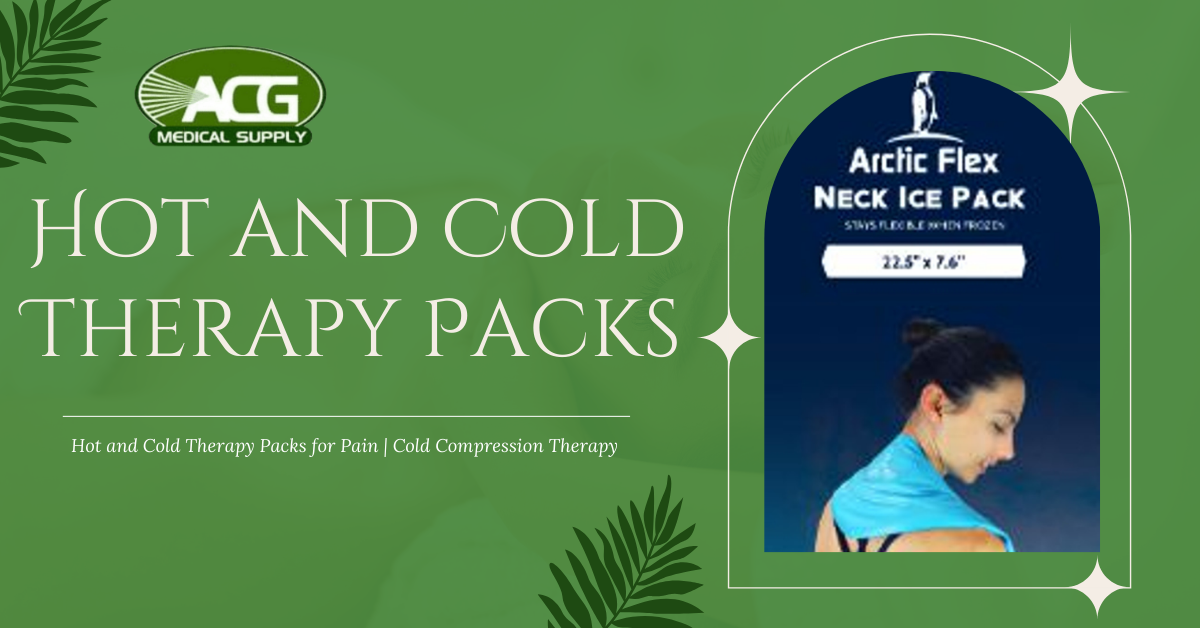Pain is a universal experience, and we all seek relief in our own ways. Often overlooked, hot and cold therapy packs offer a simple yet powerful solution for a variety of aches and pains. From minor discomforts to post-surgery recovery, these reliable tools have been providing comfort and support for generations.
In this article, we’ll explore how hot and cold therapy works, when to use each, and how they can help soothe discomfort and accelerate the healing process.
The Basics of Hot and Cold Therapy
Pain comes in many forms: a swollen ankle, a stiff back, or muscle soreness after an intense workout. While pain may vary, choosing the right therapy doesn’t have to be complicated.
- Heat therapy relaxes muscles, increases blood flow, and helps ease stiffness, which makes it ideal for chronic pain or tightness.
- Cold therapy, on the other hand, reduces swelling, numbs sharp pain, and minimizes inflammation, which is perfect for recent injuries.
By using them correctly, these therapies can help you manage discomfort at home effectively.
When to Choose Heat Therapy
Think of heat therapy as a comforting embrace for your muscles. It’s especially helpful for chronic pain or ongoing discomfort. By gently increasing blood flow and relaxing tight muscles, heat therapy helps soothe the body and ease persistent tension.
Common uses:
- Easing lower back pain or stiff neck muscles
- Relaxing tight hamstrings or quads after exercise
- Soothing menstrual cramps
How to apply:
- Place a hot therapy pack on the affected area for 15–20 minutes.
- Ensure the pack isn’t too hot to avoid burns. Wrap it in a cloth if necessary.
- Use heat before physical activity to prepare stiff muscles.
The Power of Cold Therapy
Cold therapy is all about damage control. When you experience a sprain, strain, or bruise, applying cold can bring down swelling, reduce inflammation, and numb acute pain. This method is also commonly used for sports injuries and recovery.
Common uses:
- Sprained ankles or knees
- Post-workout muscle soreness
- Swollen joints or sharp, localized pain
How to apply:
- Apply a cold therapy pack immediately after an injury for 10–15 minutes at a time.
- Wrap the pack in a towel to avoid direct contact with the skin, which can cause frostbite.
- Consider options like the Aircast cryo cuff gravity cooler, which provides consistent cooling for deeper relief.
When to Use Both: Hot and Cold Therapy
Certain conditions call for a combination approach, where a hot and cold therapy pack proves highly effective. This method is especially beneficial for chronic injuries or stiffness that also involves occasional swelling. By using both heat and cold strategically, you can target pain from multiple angles and promote faster recovery.
How to use a hot and cold therapy pack effectively:
- Begin with a cold therapy pack for the first 48 hours to reduce swelling and numb the area.
- After the initial phase, switch to a hot therapy pack to relax muscles and improve blood flow.
- If needed, alternate between the two, allowing time between sessions to avoid irritation or overexposure.
Using a hot and cold therapy pack in this way ensures you address both the inflammation and muscle tightness for comprehensive pain relief.
Helping with Recovery After Surgery
After surgery, managing pain and swelling is key to healing. Post-surgery recovery packs help by using both heat and cold therapy.
In the first 48–72 hours, use cold compression therapy, like the Aircast cryo cuff gravity cooler, to reduce swelling and numb pain. Once the swelling goes down, switch to a hot therapy pack to help improve blood flow, relax muscles, and reduce stiffness.
Alternating between cold therapy packs and hot therapy packs provides balanced relief and supports quicker recovery. Always follow your doctor’s advice on how to use them safely.
Choosing the Right Products
Finding high-quality packs is essential for effective pain management. At ACG Medical Supply, you’ll find a range of hot and cold therapy packs, cold compression therapy products, and specialized items like post-surgery recovery packs. Choose packs that are durable, reusable, and designed for your specific needs.
Tips for Safe Use
While hot and cold therapy packs are generally safe, following these precautions will enhance their effectiveness:
- Never apply heat or cold directly to broken skin.
- Limit sessions to 15–20 minutes to prevent skin damage.
- If pain persists, consult a healthcare professional.
When to Seek Professional Help
While these pain relief therapies are highly effective, they aren’t a cure-all. If your pain doesn’t subside or worsens, it’s crucial to consult a medical expert. Persistent pain could be a sign of a more serious condition requiring professional treatment.
Conclusion Hot and cold therapy is a powerful and simple method to relieve pain and support recovery. By using cold therapy to reduce swelling and heat therapy to ease muscle stiffness, you can effectively manage discomfort and speed up the healing process. Always ensure you’re following the right approach at the right stage of recovery, and consult your doctor for guidance. With the right techniques, you’ll find relief and get back to your daily routine more quickly.

